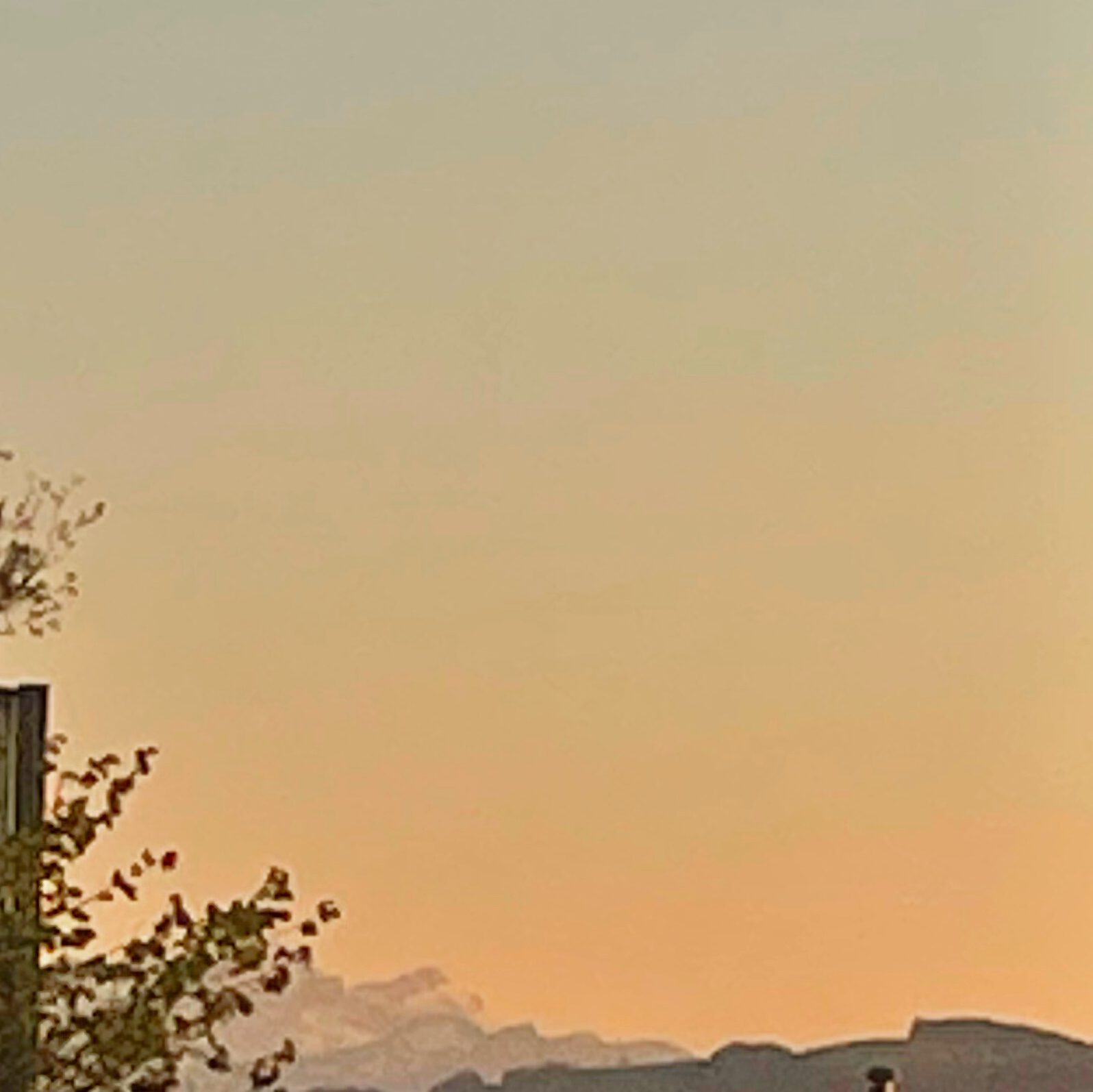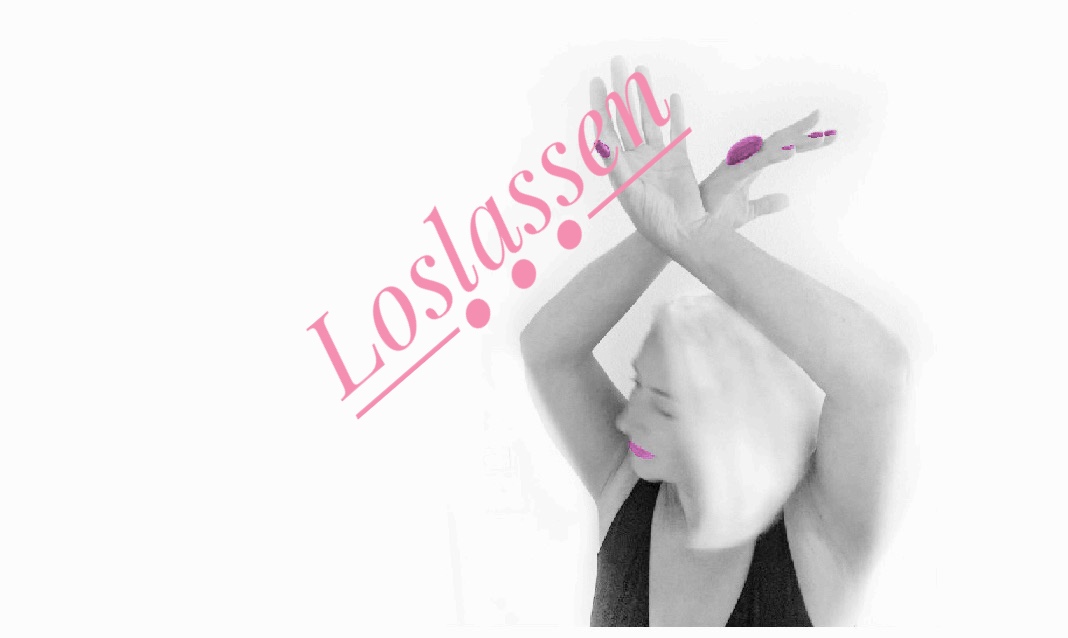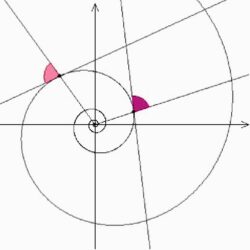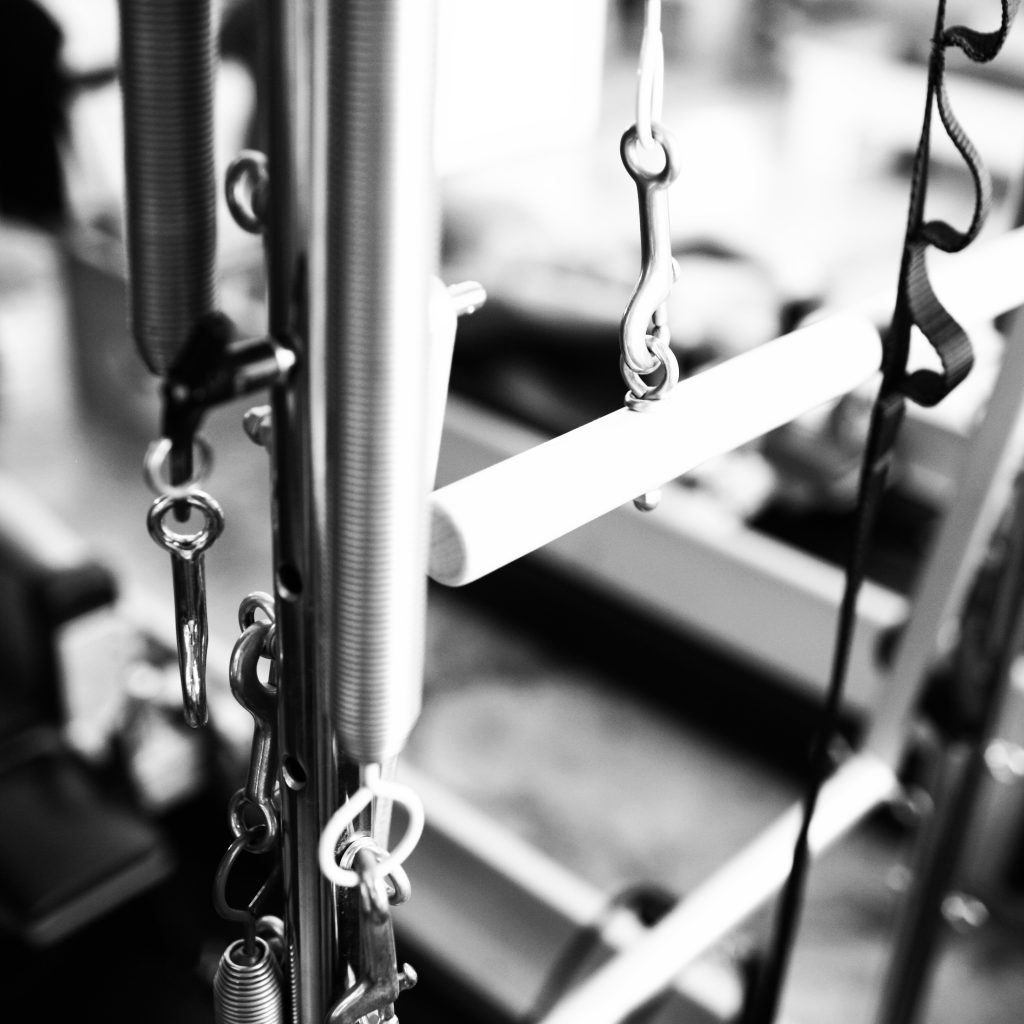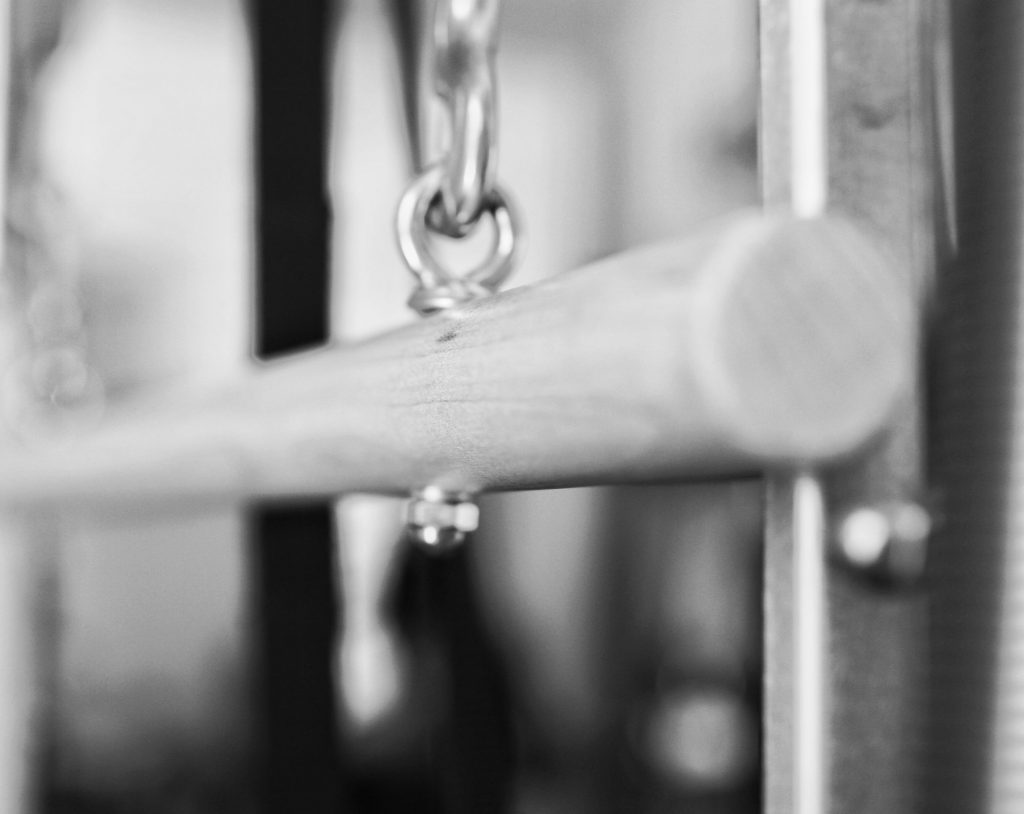Move = Flow
Keep Moving
“Change happens through movement and movement heals”1
Joseph Pilates wrote this sentence out of the conviction that exercise is the best thing for our bodies.
Sandy Shimoda, who is working and educating together with Jay Grimes (a student of Joseph Pilates in the 1960s) for many years, writes about this in her recently published manual:
“The benefits of moving your body include improved circulation and cellular renewal, stress relief and better mood, lowered blood pressure and longevity. But the most compelling reason to keep moving is simple: Our bodies are designed to move and all systems within the body depend on it. The change the opening quote refers to is what the body needs to recover from misuse, tension, and inactivity. The movement Joe taught corrected body mechanics and healed ailments, from chronic back pain to post physical therapy rehabilitation.”2
The concern that movements would be done incorrectly was obviously of little importance to Pilates. He gave his students exercises that were adapted to their level of training. And he rarely made any improvements. Jay Grimes describes his early days in Joseph Pilates’ studio in New York in the early 1960s. Joseph Pilates’ first instruction was “MOVE!” and it was not until the third lesson that the second instruction came: “Use your gut.”
Joseph Pilates probably considered the movement itself more important than centering, precision and control.
Move !
was one of the most important and most used instructions from his mouth as his students unanimously describe.
But Joseph Pilates considered not only the movement itself to be important, but also the flow of movement. In his studio, he placed great importance on his students moving continuously.
Because only while they were moving could he observe and assess what weaknesses, strengths or imbalances they had and which exercises would help them to overcome them.
As we know, the first Pilates principle of breathing was essential for Pilates – as you can also read in my blog posts on this topic
“Above all learn how to breathe correctly” and “The Magic Six”
The interaction of breathing and movement is still an essential part of every beginner’s Pilates training. This combination creates the rhythm of movement.
And this rhythm accompanies our flow of movement. Finding this rhythm is an essential prerequisite for the continuous flow of movement – i.e. for our
Flow
Scientifically, flow in movement is described as follows: “Flow is the melting together of action and conciousness; the state of finding a balance between a skill and how challenging that task is.”3
And Sandy Shimoda even describes it as an essential prerequisite for the Joy of Movement: “When you achieve flow in your workouts you will feel the sense of enjoyment that comes from being immersed, involved, and energized by the process. It is the ultimate state of mind-body balance in motion; [ … ]. It is also the rewarding sensation that we all deserve to experience as often as we can manage.”4
The advantages of flow, this continuous movement in the rhythm of breathing, are, among other things, the joy of movement. The prerequisite for this is movement – so MOVE! as Pilates said.
Three things can severely and permanently hinder the flow and thus take away our joy:
Moving too slowly When we try to do Pilates very well, we prioritize control and precision over the natural rhythm of movement (see above) and the result is often mental and physical tension…or even tightness.
Hurrying When we move too quickly, we often rely on momentum and do not perform the exercises from our center of strength. We can only achieve a controlled and uninterrupted rhythm from our center of strength in conjunction with the rhythm of breathing.
Overthinking In our Pilates practice, we strive for balance between mind and body. When we slow down to perfect the execution of the exercise, the mind takes over at the expense of the body. On the other hand, when we “rush through” our Pilates exercises, we move our body without using the mind.
Sandy Shimoda sums it up like this: “If you are moving without control, or controlling without moving, you are not practicing Contrology” 5
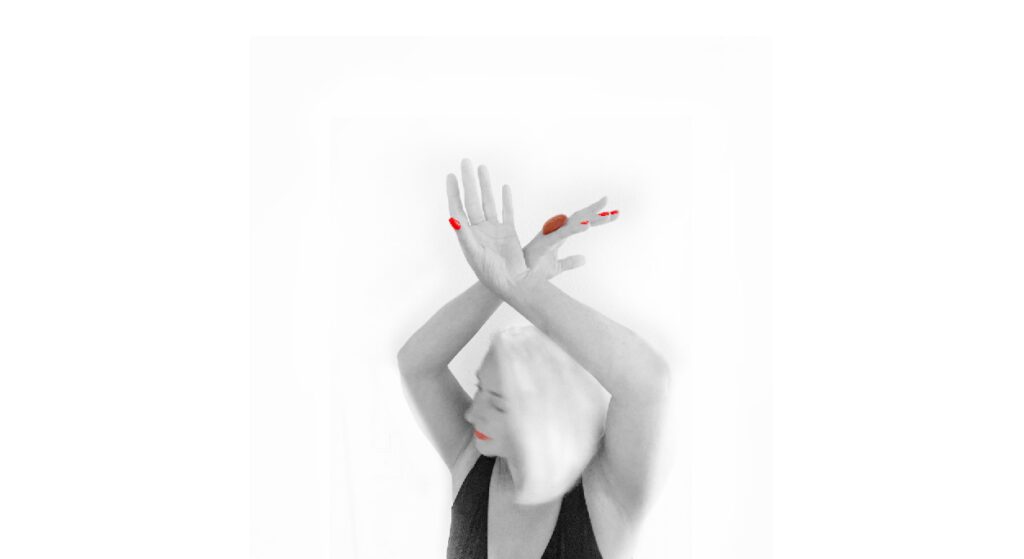
Just like in Joe’s studio, we can safely ignore the worry that we are doing the exercises “wrong”. In my online training you will only do exercises that are familiar to you and are adapted to your personal training level.
“Be bad – it’s good for you”
says Jay Grimes.
And what he meant is that it is good when we become aware of what we are doing badly and what we can do better.
In this sense, bad movements help us to learn and get better!
Therefore, move in the rhythm of your breathing, keep moving and enjoy the movement!
Movement is flowing, it is the essence of change and movement heals!
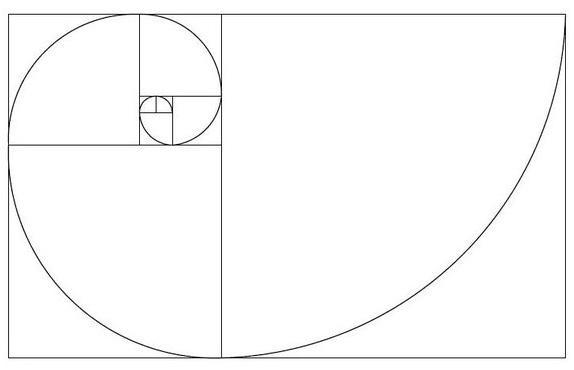
- Return to Life through Contrology” Joseph H. Pilates New York 1945 ↩︎
- “Contrology Handbook. A Guide to Joe Pilates’ Method” Sand Shimoda 2024 . p.31 ↩︎
- Ellis; Völkl; Morris (1994) “Measurement and Analysis Issues with Explanation of Variance in Daily Experience Using the Flow Model” in Journal of Leisure Research. 26 (4); 337-356 ↩︎
- “Contrology Handbook. A Guide to Joe Pilates’ Method” Sandy Shimoda 2024 . p.44 ↩︎
- “Contrology Handbook. A Guide to Joe Pilates’ Method” Sandy Shimoda 2024 . p.46 ↩︎
Pilates Principles
The Magic Six
In his writings1, Joseph Pilates described his method, its principles and its execution in great detail. He names and explains individual focal points very clearly.
From these focal points, his students and successors later developed the six so-called Pilates principles:
- Breathing
- Concentration
- Centering
- Precision
- Control
- Flow
Breathing
“Breathing is the first act of life, and the last. Our very life depends on it,”2 wrote Joseph Pilates in 1945.
He was convinced that most people do not breathe “correctly”, meaning that they do not fill their lungs completely when they inhale and do not empty their lungs completely when they exhale – or in other words: they breathe too shallowly.
In his opinion, this in turn has a negative effect on our health. When we breathe shallowly, we breathe less deeply and therefore inhale less fresh air. As a result, we take in less oxygen and also release less used air. Shallow breathing also prevents the full movement of the chest and diaphragm – which in turn leads to limited mobility of the chest, diaphragm and also the thoracic spine. And this inevitably leads to poor posture.
Concentration
The perception of our movement – I also like to call it mindfulness.
It does not describe precision or control, i.e. the precise execution of the movement or the controlled use of our muscle power.
It describes our perception of the (movement) processes in our body, the use of muscles and strength, the movement of the joints.
Concentration is the perception of the connection and the interaction of body and mind in movement.
Centering
All power comes from the body’s center and at the same time everything is connected to the body’s center. This holistic approach is inherent in the entire Pilates training.
Jay Grimes talks about the “two-way stretch”. And by this he means stretching, aligning and “working” in opposing directions:
- from inside to outside and from outside to inside
- from top to bottom and from bottom to top
- from left to right and from right to left
- from front to back and from back to front
- in the diagonals
Lori Coleman-Brown compares this to the figure of the star: from the center of the body to the tips of the fingers, toes and hair. Everything radiates and draws outwards – and at the same time remains firmly connected to the center.
Precision
Precision refers to the execution of the individual exercises and their movement sequence.
By understanding the movement sequence, we first understand the exercise with our minds and through repeated training we also understand it with our bodies.
With regular training, the movement sequences and their execution become more and more precise.
Control
“Be in control of your body, not at it’s mercy” is what Joseph Pilates is quoted as saying.
Through the strength of the body and its muscles together with the power of the mind, we gain control over the movements of our body.
Joseph Pilates called his method “Contrology”. And Control is an essential training goal in classical Pilates.
Flow
The connection of the individual exercises or the need to create smooth transitions from one exercise to the next in order to create from the sequence of individual exercises a uniform flow of movement.
Flow in movement is scientifically described as follows: “Flow is the melting together of action and conciousness; the state of finding a balance between a skill and how challenging that task is.”3
And Sandy Shimoda goes on to describe: “When you reach flow in your workouts, you will feel the sense of joy that comes from immersing yourself in the process, engaging and energizing. It is the ultimate state of balance between body and mind in motion, […] It is also the rewarding feeling that we should all experience as often as possible.”
Pilates in flow creates joy in and through movement – the Joy of Movement.
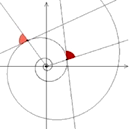
These six principles are and remain the basis of every Pilates training – regardless of whether you are a beginner or advanced.
In Joy of Movements beginner training, we focus particularly on breathing and find our movement rhythm through the breathing rhythm.
And in all Pilates classes at Joy of Movement, we also regularly work with mindfulness or focus on one of these principles – regardless of whether you are a beginner or more advanced.
An important basis for this type of Pilates is familiarity with the individual exercises and their sequence, as we achieve in classic Pilates training. Because only then can we direct our attention in movement to one or more Pilates principles – or simply to how we move.
My very first Pilates teacher, Vesna Matthies in Hamburg, called this form of training
Pilates in Zen Mode

- “Your Health” Joseph H. Pilates New York 1934
“Return to Life through Contrology” Joseph H. Pilates New York 1945 ↩︎ - “Return to Life through Contrology” Joseph H. Pilates New York 1945 ↩︎
- Ellis; Völkl; Morris (1994) “Measurement and Analysis Issues with Explanation of Variance in Daily Experience Using the Flow Model” in Journal of Leisure Research. 26 (4); 337-356″ ↩︎
Pilates Retreat 2023
Pilates Retreat in April 2023 and what the participants say about it
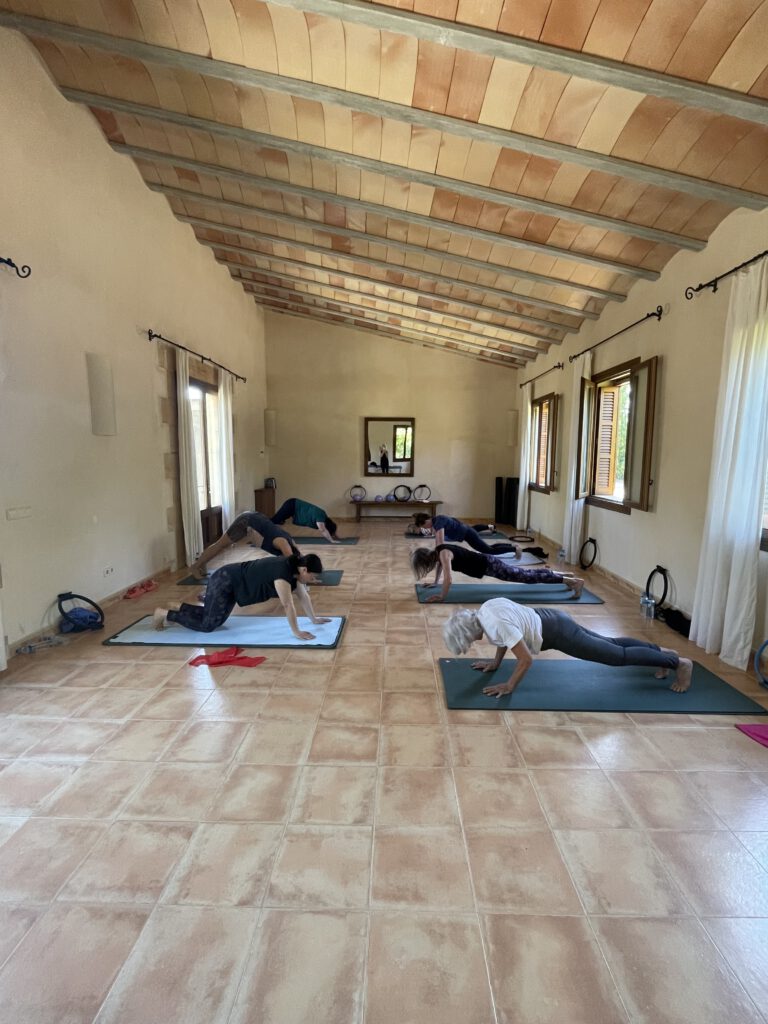
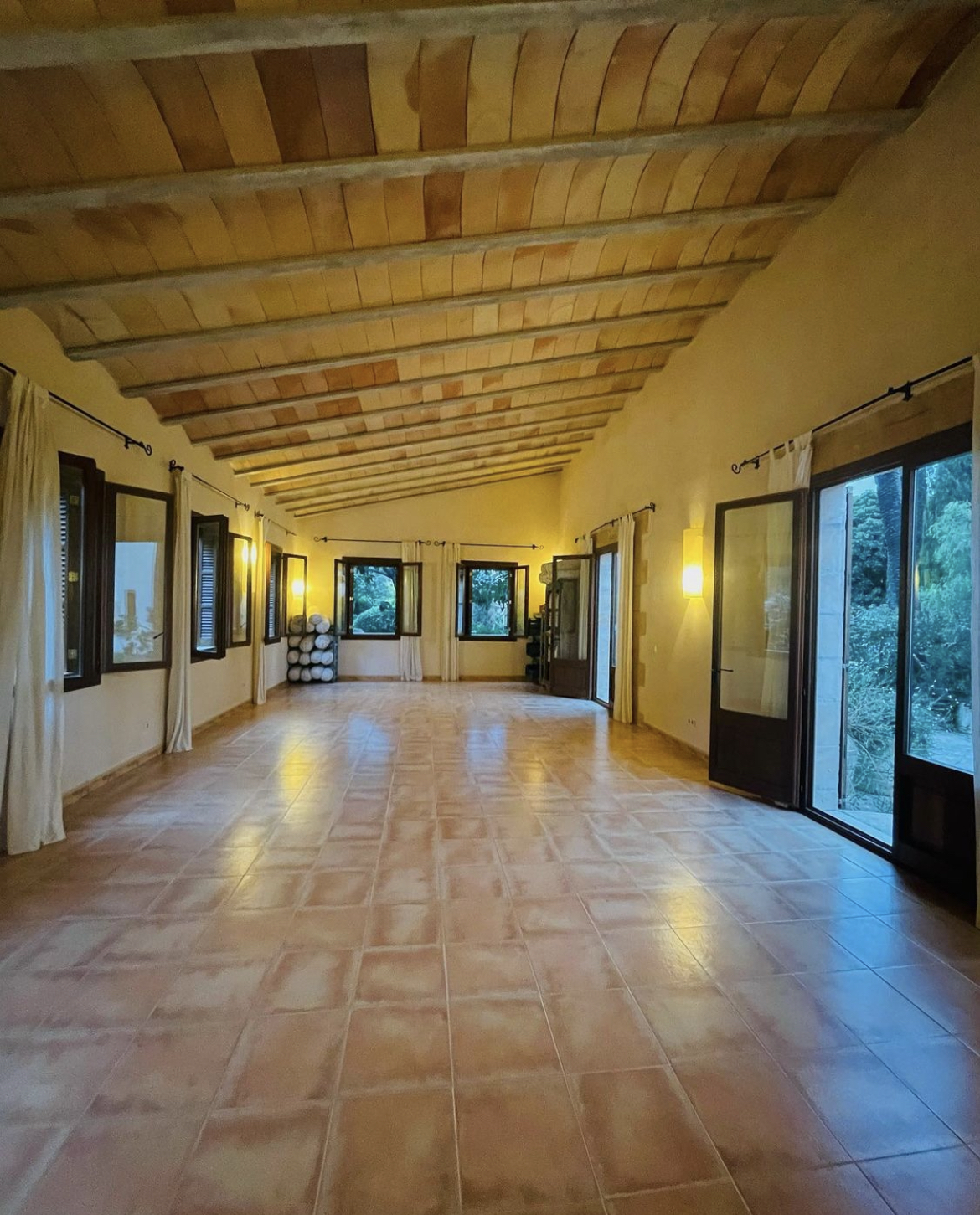
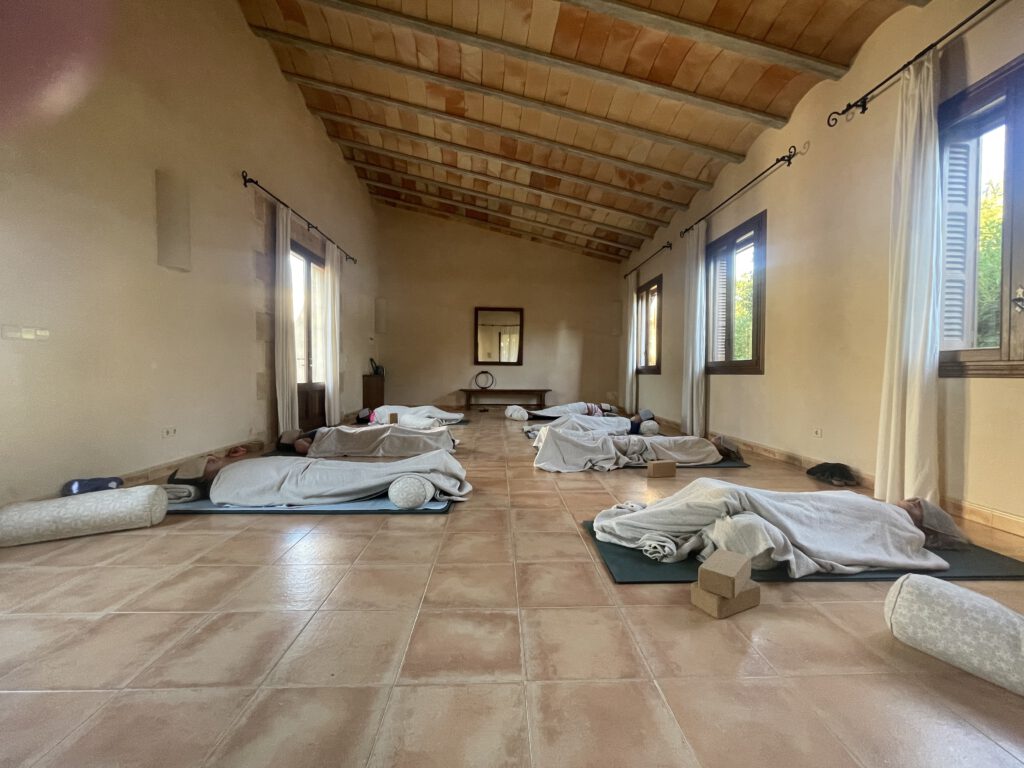
Joy of Movement’s first Pilates retreat took place between 15th and 22nd of April 2023.
We lived together for a week in Finca Sanau on Mallorca. In the midst of quiet seclusion, surrounded by Mediterranean nature, we found many places to relax and retreat, but also to sit together, we let our souls dangle, enjoyed the peace and togetherness, experienced both physical exercise and relaxation and dived for refreshment in the salt water pool. Every day, in the morning and late afternoon, I taught two group movement classes: Pilates and Yin Yoga. In addition, there was the possibility to book private Pilates sessions and Asian Blend massages. This week was suitable for beginners with or without Pilates knowledge as well as for advanced users. The accommodation in the Finca Sanau was in double rooms – on request, a single occupancy could also be booked for an extra charge. Breakfast, lunch and dinner were included.
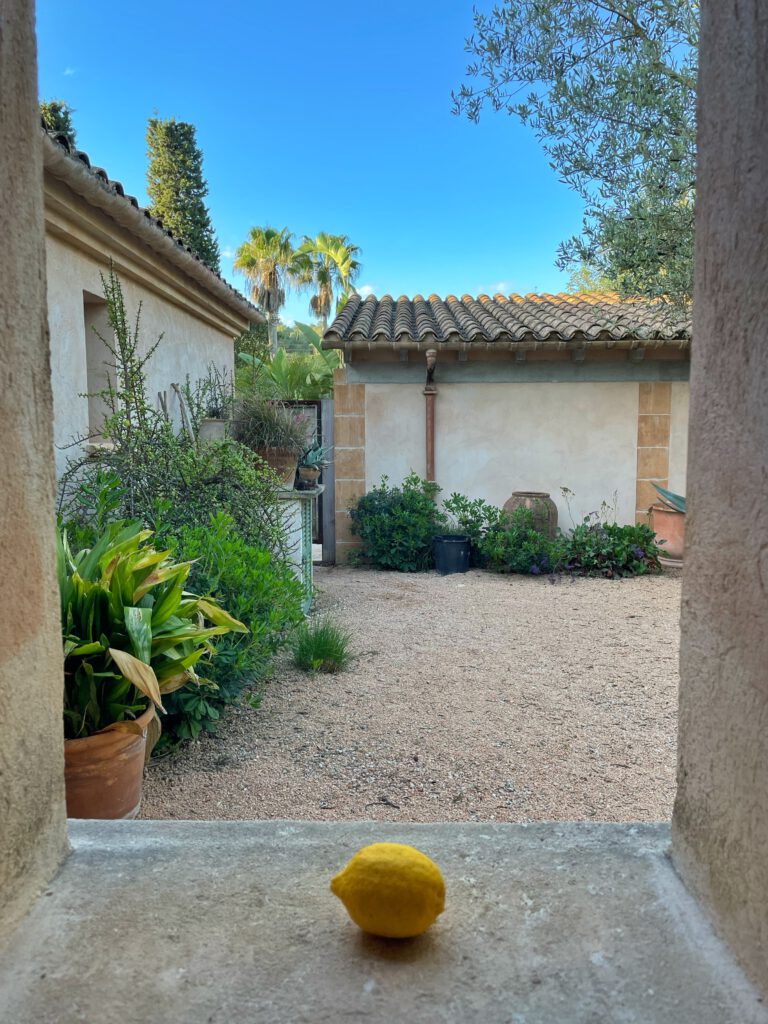
” Great time. I still live from it. “
-D.C.
“I found it to be a nice, relaxing trip overall. I can happily recommend it. The togetherness was nice and considerate. The Pilates sessions were good and fun. I would have liked a little more explanation of the theory. … Ruth was a personable and easy-going hostess, who always made sure that we all felt comfortable. All in all, a very successful and well-organised holiday.”
-P.H.

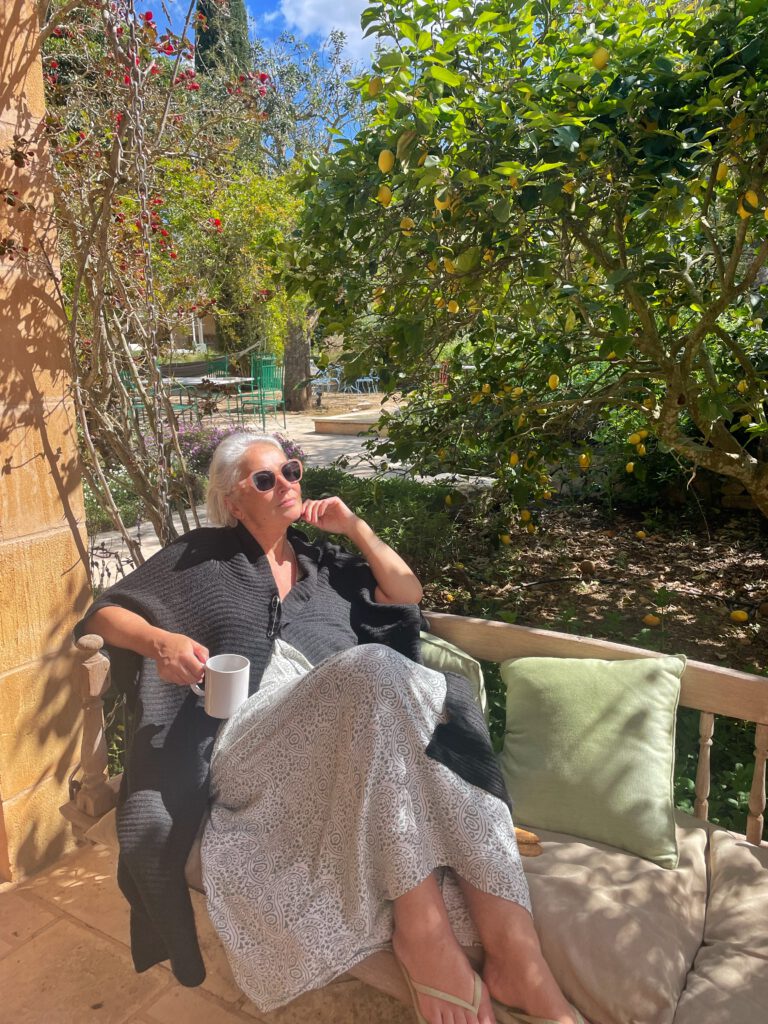
“Overall, I found it to be a very pleasant and nice atmosphere and mood with great group dynamics. The level of difficulty of the exercises was okay. I liked that Ruth took the time to address the individual needs of each participant, such as I…s knee problems . I myself was also restricted with the pain in my lower back. That was also taken into account.”
-C.C.
“I thought the two Yin Yoga units were great as a supplement to the more yang related Pilates sessions. The stretching was very good and at the end lying down quietly was good for calming down and reviewing the day. I thought it was good, that Ruth came over with the essential oil and stretched our shoulders slightly. It was very relaxing overall.”
-F.C.

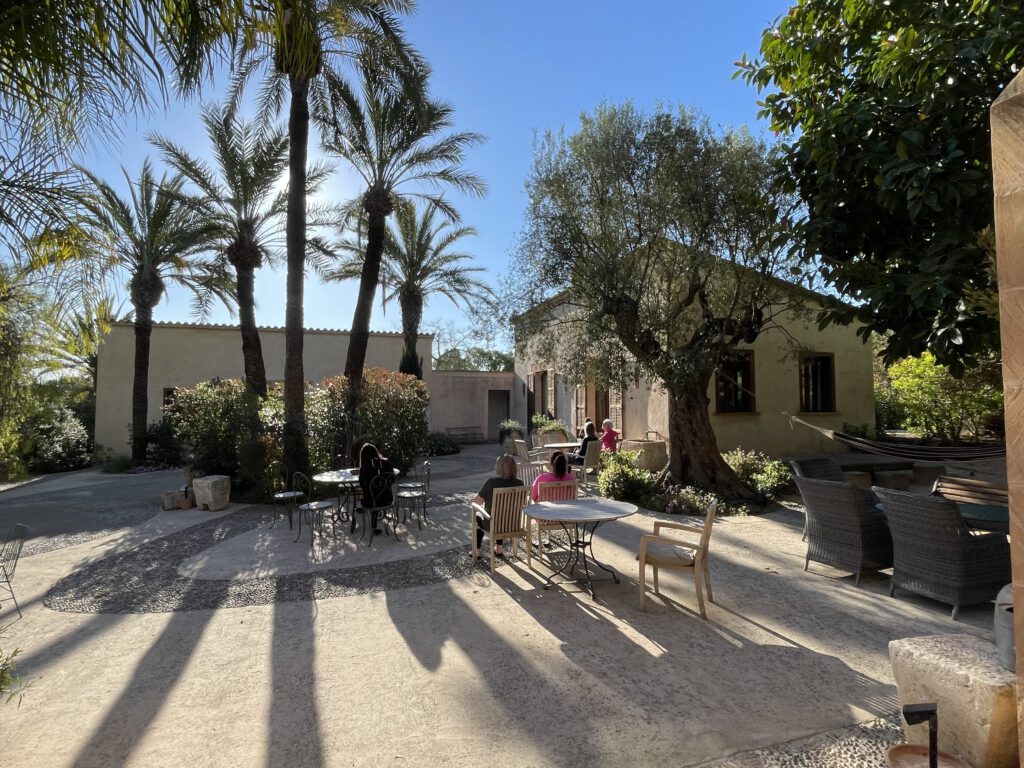
“… as the second sports unit of the day, I prefer something relaxing or something less intensive – the massages were great – it was a very nice, beneficial week”
-F.R.
“I found Finca Sanau really great. The house and the equipment were great, the food and the catering were great, the garden was a dream. I especially liked the hammocks and the terrace. I didn’t use the pool because the water was still too cold for me. I also liked the yoga room, especially that there was underfloor heating.”
-C.F.

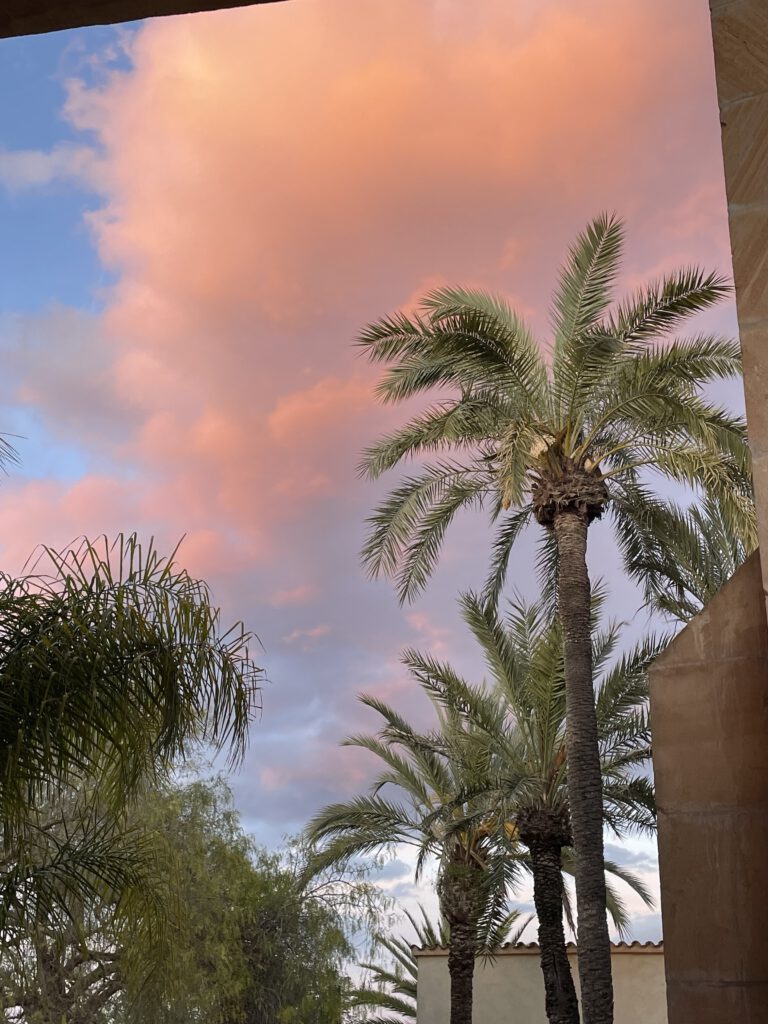
“I really enjoyed it. … The week was simply wonderful and I can already tell you that I will be there again next year. My preferred period would be April again or early to mid-May at the latest.”
-C.D.
In April 2024, Joy of Movement is planning another Pilates retreat. To get all information and stay up to date, please contact me with the commentary form below.

1st online workshop – feet
Touch the earth
Joy of Movements first workshop will be about our
FEET
“The human foot is a masterpiece of technology and a work of art,”
Leonardo da Vinci wrote.
And they deserve much more attention, care and attention than we tend to give them as long as everything is fine.
Only when they get painful and a bath or a massage does not bring lasting improvement do they get our “real” attention.
And this often ends at the doctor, who only too often recommends insoles, injections or even operations.
For Joseph Pilates, our feet are the foundation of our body and he emphasized the importance of corrective exercises, especially for the feet.
For example, training on the reformer begins with exercises specifically for the feet and legs: Leg & Footwork.
And the first device he ever invented was the Foot Corrector.
The workshop about our feet will take place online and will last two hours.
So you can participate from home and pamper your feet with a footbath right afterwards – without having to force them into shoes again to make your way home.
We will look at various aspects relating to our feet:
• the anatomy
• evolution
• the various ailments and diseases of the foot
• and above all we will learn exercises and measures that are good for the feet and which are healing.
Feet – the hands that touch the earth
takes place twice in November. So you can choose either date:
second Saturday
13th November 2021 ● 4 pm – 6 pm
or third Saturday
20th November 2021 ● 10 am – 12 pm
Cost: 60 €
including a surprise box,
which you will receive after registration and
whose content you will use during and after the seminar
Please register directly with me by 1st November at the latest.
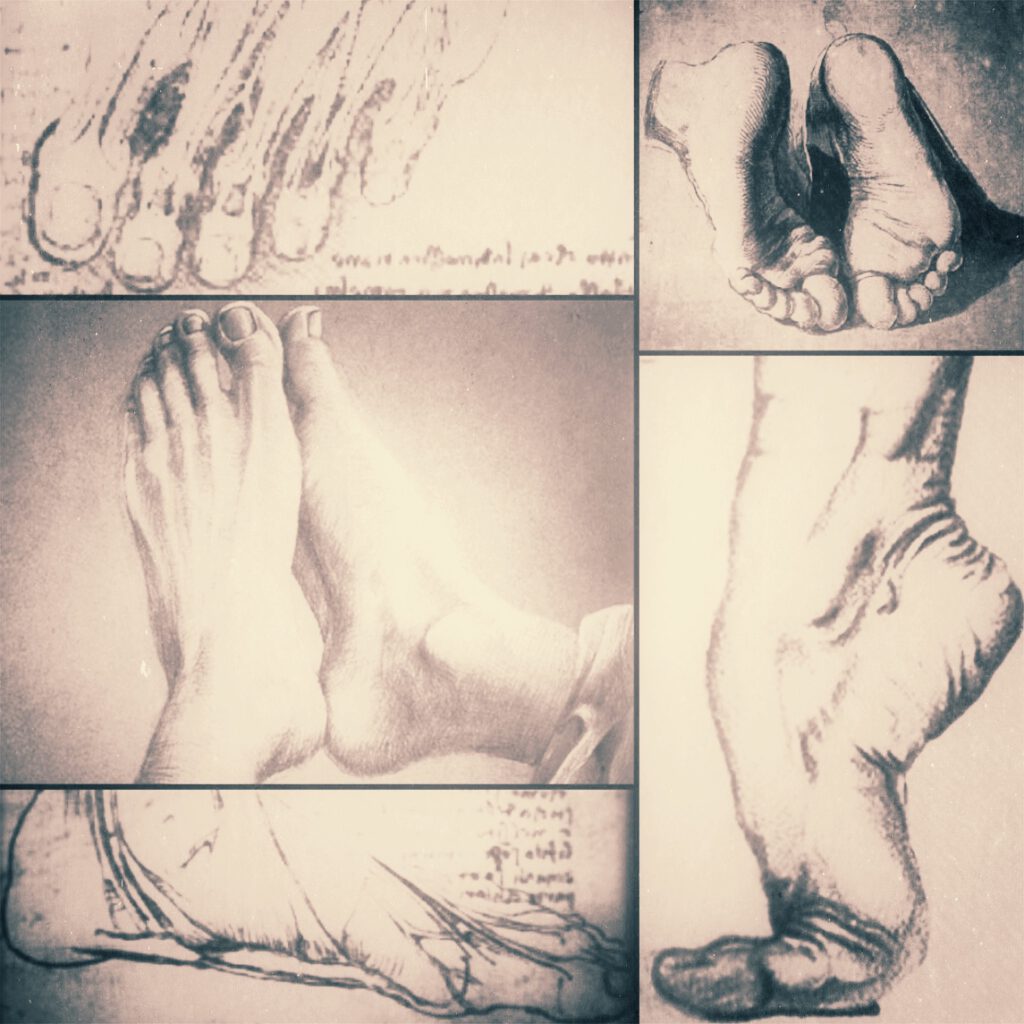
August 2021
News in September
August is already drawing to a close and here in the north it feels like late summer, sometimes even a bit autumnal.
The birch in my garden loses its first yellow leaves in the persistent rain and wind.
And so it is time to prepare for Pilates in late summer and autumn.
First of all, I would like to thank everyone who pilated with JOY so regularly during the two summer months, despite the heat and school holidays.
The summer focus was on the FLOW, i.e. on bringing together the known exercises, feeling the connections, the similarities and the flow of movements and breath. And we found and integrated the transitions and were thus able to experience the spirit and possibilities that are inherent in the classic mat.
I would like to take all of this into the next Joy of Movement season.
You will find the new timetable, which is valid from September, here.
Please note that there are new features!
- At the moment there are no beginners courses in my timetable.
- Instead of a beginners class (which naturally requires a minimum number of participants), I will offer introductory lessons at regular intervals in which new participants are instructed in the basic principles (breathing, body awareness and up to ten basic exercises) – so they will get a first personal “training plan” with which they can then participate in all current classes.
- “New participant” means everyone
- who has never done Pilates at all or
- has never done Pilates with me or
- maybe wants to get back on track after a long break and is no longer familiar with the exercises.
- Participation in one or more intro lessons (optionally to be replaced by private lessons) is therefore from September onwards a mandatory requirement in order to join the current courses.
- I have no particular date yet when the first intro lesson will take place. But I have planned intervals of four to six weeks – this depends on your demand 😉
- And of course these classes are open to all participants to catch up on missed classes or as an additional lesson … because this return to the beginnings expands and deepens the own practice and perception.
- My very first Pilates teacher Vesna Matthies called this ‘training in ZEN mode’: Pilates as if you have never done Pilates before.
- This is a wonderful way of pilating, as one can experience every single exercise with deep breathing and a lot of quiet and time. In addition, this ZEN mode increases mindfulness and body awareness, and thus deepens the understanding of each individual exercise.
- This way the Pilates classes will take place without major interruptions. Interruptions that inevitably arise when someone is brand new to Pilates or not familiar with the exercises.
- Training without interruptions is the ideal prerequisite for being able to train with concentration on perfection and flow (three important Pilates principles!)
- From September onwards I will be teaching the Tuesday morning lesson in English.
- As you know, I did my training in English and for many years I taught exclusively in English.
- Now I have found that this ability has become a bit rusty – which is not surprising, because everything is lost to a certain extent when we no longer use it. For this reason it has been a personal concern of mine for some time now to be able to teach in English again. And the Tuesday morning class is of course a good choice, as I am fortunate that this class already has an English-speaking participant 😉
- If you would like to be guided and cued in English, you are very welcome in this class!
- And of course this Tuesday morning class will remain open to all participants for catch up and for additionally bookings!
- So if you want to join this class to catch up or do an additional class, but do not want to be taught in English, just let me know and I will then teach the lesson bilingually or in German.
- I have now permanently pushed the Tuesday evening class to the later starting time of 7:30 p.m.
I am looking forward to move with you into autumn!
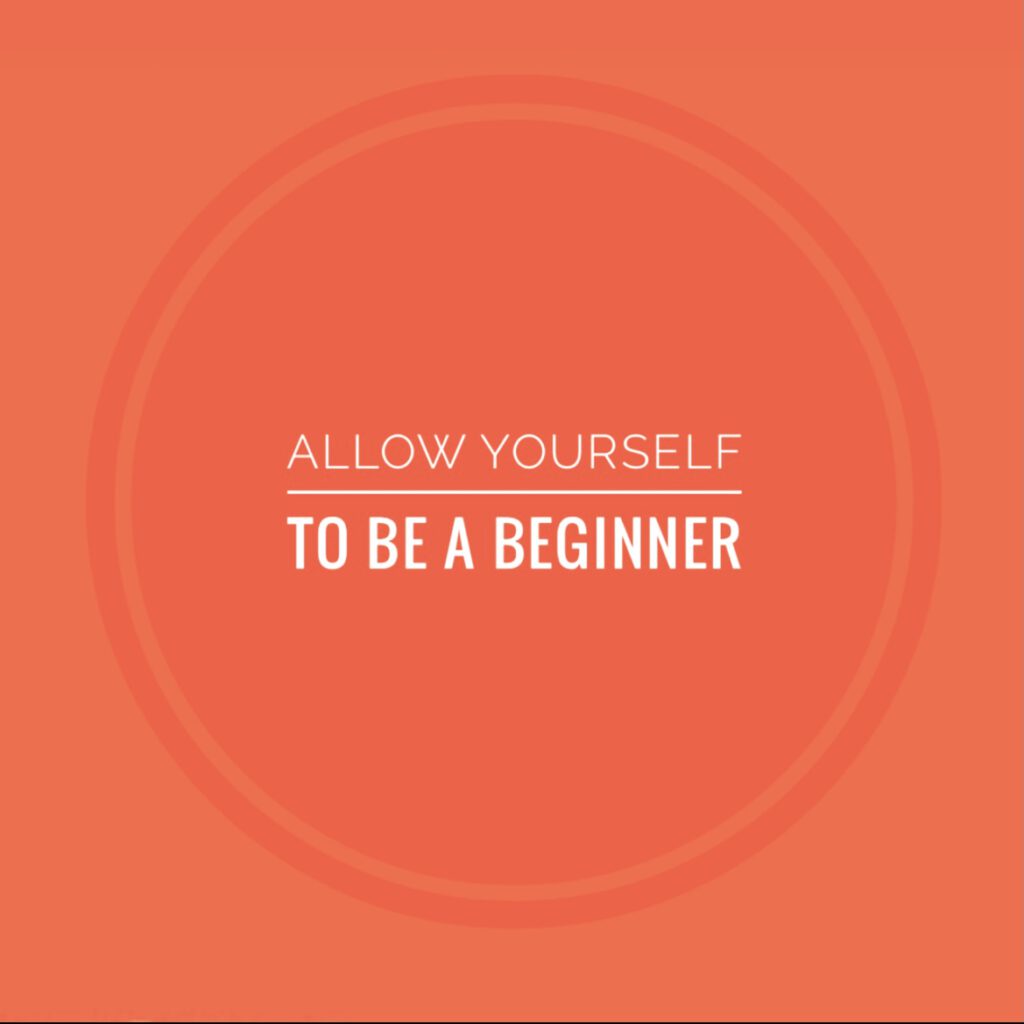
Pilates Apparati
More than just the Mat …
Pilates is a holistic training.
Most know Pilates on the mat – many think it is comparable to yoga (and some exercises seem similar) … but very few know that Pilates training also includes equipment.
I am not referring to the small devices such as poles, balls, ribbons or the Magic Circle, but to the large apparati that Joseph Pilates developed and patented in the early 1920s.
Even the Pilates mat is more than just a simple gymnastics or yoga mat. Pilates made it higher and more padded. He added handles, straps, and small moon boxes for expansion.

He spoke very consciously of apparati or equipment as opposed to machines. According to the definition, a machine is a mechanical device consisting of moving parts that transmit force or energy and with the help of which certain work can be carried out while saving human labour.
A device, on the other hand, is a (movable) object with the help of which something can be processed, effected or manufactured.
In contrast to the machine, which makes (physical) work easier for us, the (Pilates) apparatus helps us to “work” our body, creating stronger muscles and greater mobility and thus restores the health of the body … and this is what Joseph Pilates describes in his book “Return to Life through Contrology”.
The apparatus does not make our work easier, on the contrary with its help we “expand” the “work” of our body.
We become part of the equipment, so to speak. By working with and against the springs, it gives us feedback about the muscles that are or should be involved.
Our body awareness is increased and strengthened in a unique way.
And that in turn helps us to control and improve motion sequences.
And it was precisely for this reason that Pilates invented all of his equipment. He was always concerned with healing and improving the body that stood before him. In some cases, the physical limitations of his clients gave him the impetus to develop certain devices in the first place.
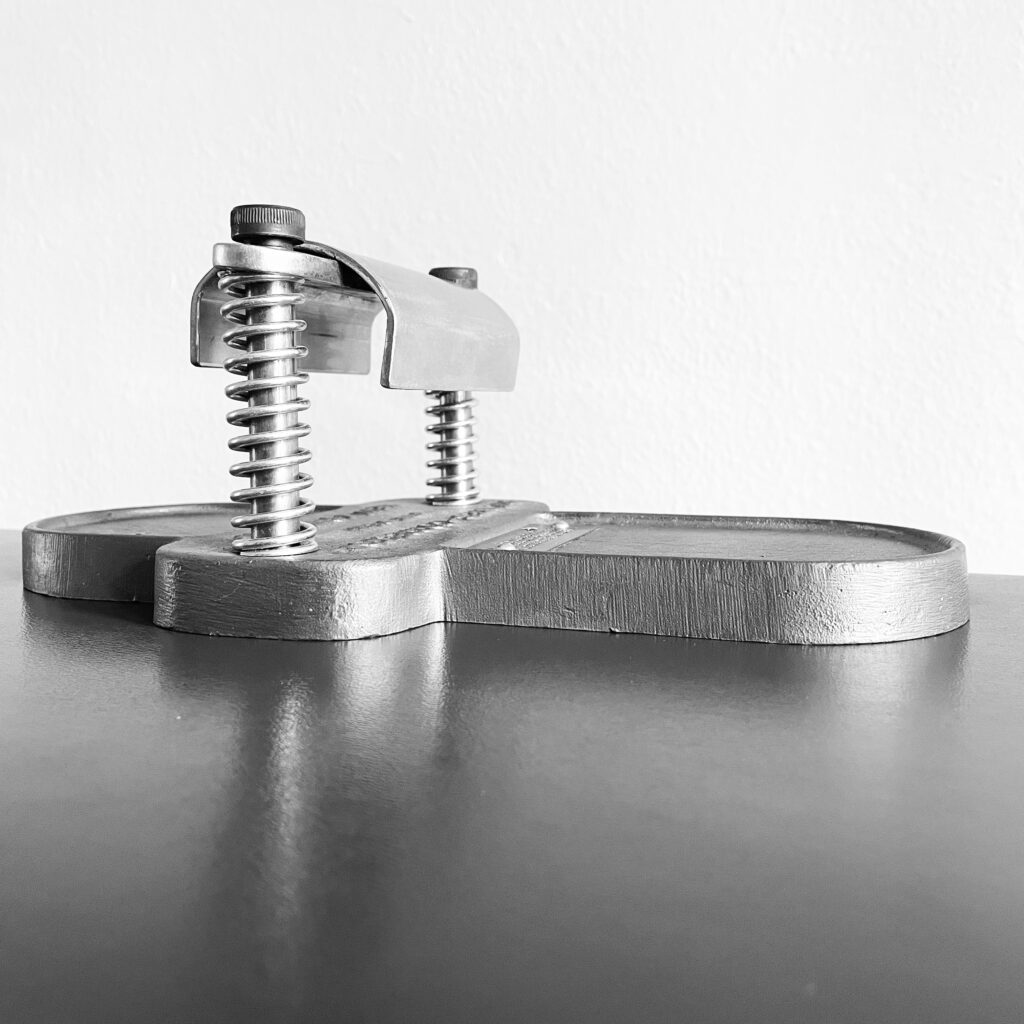
The first piece apparatus that Joseph Pilates invented was the “Foot Corrector”.
Not surprising when you consider that the feet are the foundation of the entire body and are very neglected in the civilised world:
・ We don’t use them enough because we walk and run less often
・ And when we walk or run, we put on shoes.
And as they do protect the feet from dirt and injuries, they also prevent the feet from moving “properly” – as rolling them over from heels to toes and vice versa, bending the toes and spreading them apart.
And due to the lack of these movements, the intrinsic muscles, i.e. the muscles that are inside the foot, are not trained at all and the tendons of the leg muscles (which end in the foot) become shorter and shorter.
Many more apparati followed this first one. And Pilates observations of the human body, its anatomy and also its “mechanics” always gave the impetus.
How does the body move?
Which muscles enable which movements?
Where are the connections?
And what enables, but also facilitates the interaction …
He invented and built most of the apparati himself. And he also has patents for those.
A few pieces were inspired by devices developed by other innovators (e.g. from
Eugen Sandow) and he has not registered any patents for these devices.
The first large piece of equipment, the “physical exercise device” as it is called in the patent, he built himself and added changes and improvements over the years.
There were at least three of these in his New York studio, as can be seen on recordings, and they were used by all his clients. And here in the NY studio it finally got the name, which is still valid today: “Reformer”.
This name describes perfectly why Pilates invented this apparatus and why it was and is still used regularly in a Pilates studio:
it not only trains the body, it reforms it.
And reforming means changing, improving, redesigning.
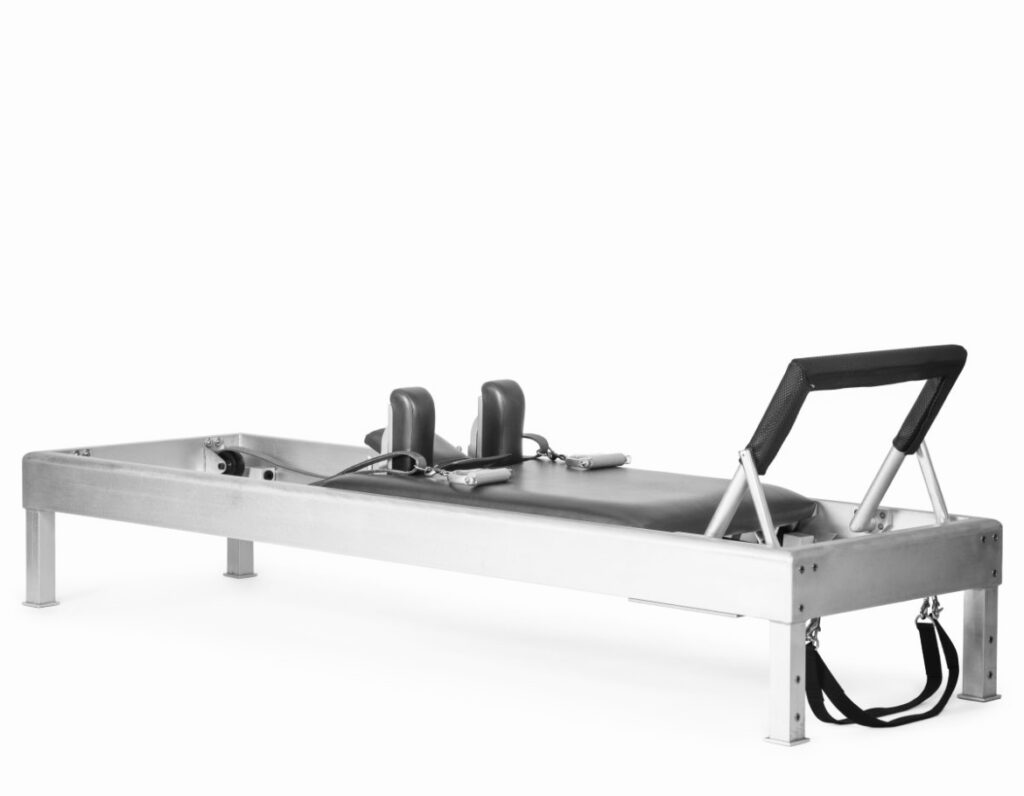
It is the content and the aim of his method, as he described it in both his books. For him, it’s not just about physical fitness or physical activity, but about the corrective power of his exercises.

Since the reformer is a very large piece of equipment, Pilates invented its “little brother” – the Wunda Chair – a reformer for home use. This one fits even in small New York apartments. And when turned upside down, it became another seat and piece of furniture. Today’s Wunda Chairs, however, no longer serve this dual function.
Pilates can definitely be described as obsessed – although he was not an ascetic do-gooder. On the contrary, he liked alcohol, cigars, women.
But in his studio and in relation to his method, which he called Contrology, he was meticulous and did not tolerate any dilution.
He specified the exercises that were done and they were done as he specified – no variation or relief, no change in order.
The exercises he gave his clients were demanding and encouraging, and even if they were difficult, they were doable. Exercises that were too difficult for the client were not done … until the client got stronger – only then new exercises were added to their individual program.
We know from many reports from his clients that he was a strict teacher.
Some loved him, others preferred to be taught by Clara (Pilates wife).
However, this made no difference in the method, only in handling.
In his two publications “Your Health” (1934) and “Return to Life through Contrology” (1945) his motivation to improve the physical health of all people becomes more than clear. In general, he wrote these two books, not least to draw attention to the poor physical health of the population and to show that his exercise system, his method, is an effective means of counteracting it.
Again and again he sought contact with the health authorities and also with doctors and hospitals in order to present and advertise his method. After the documentation and presentation of the successful rehab process of Eve Gentry *, he was even offered a contract for the rehab department, which unfortunately did not materialise. **
With this knowledge it becomes clear that his method, the Pilates System or ‘The Work’, is not a pure mat training, but that the apparati have their very useful place in this system.
Training Pilates without the equipment is therefore a very incomplete Pilates training. Exclusively pilating on the mat certainly makes you stronger, but the corrective effect of the training stays very limited .
Only the Pilates apparati turn your training into a true Pilates training.
‘Contrology develops the body uniformly, corrects wrong postures, restores physical vitality, invigorates the mind, and elevates the spirit.’


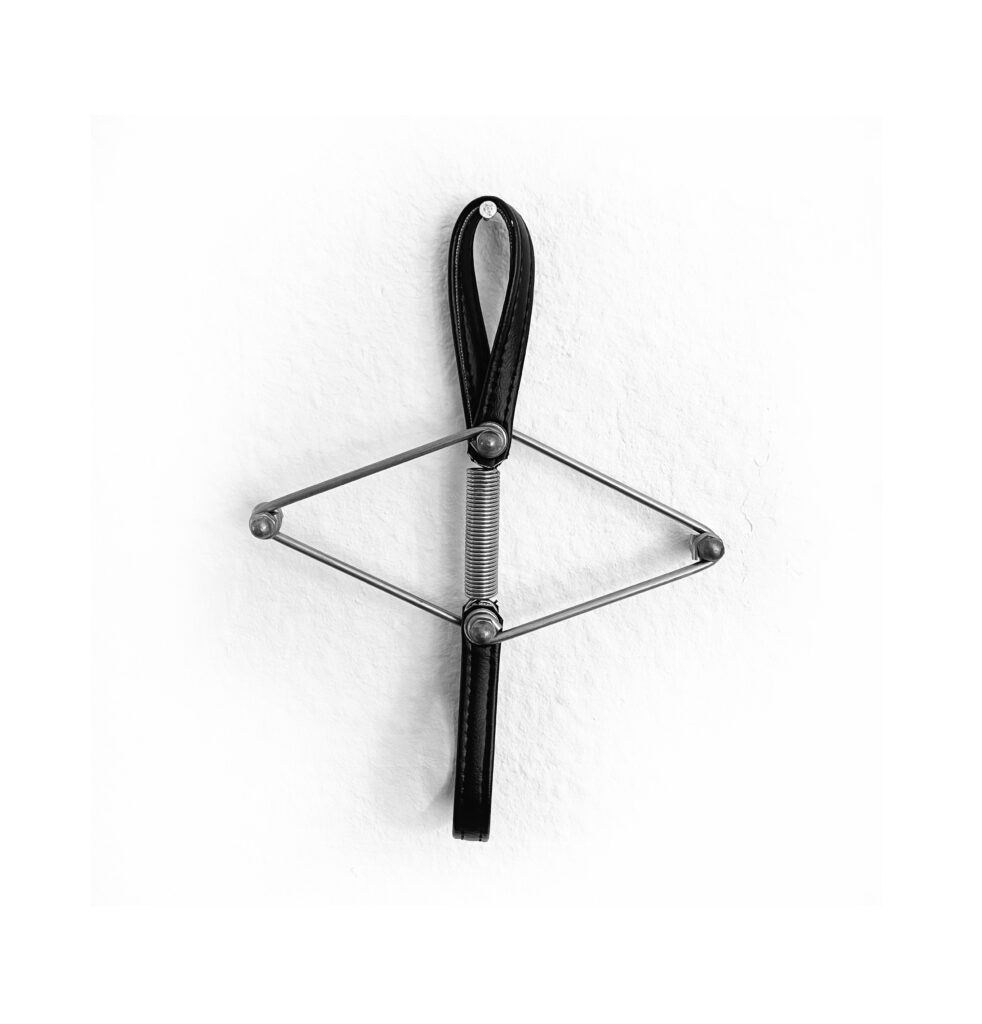

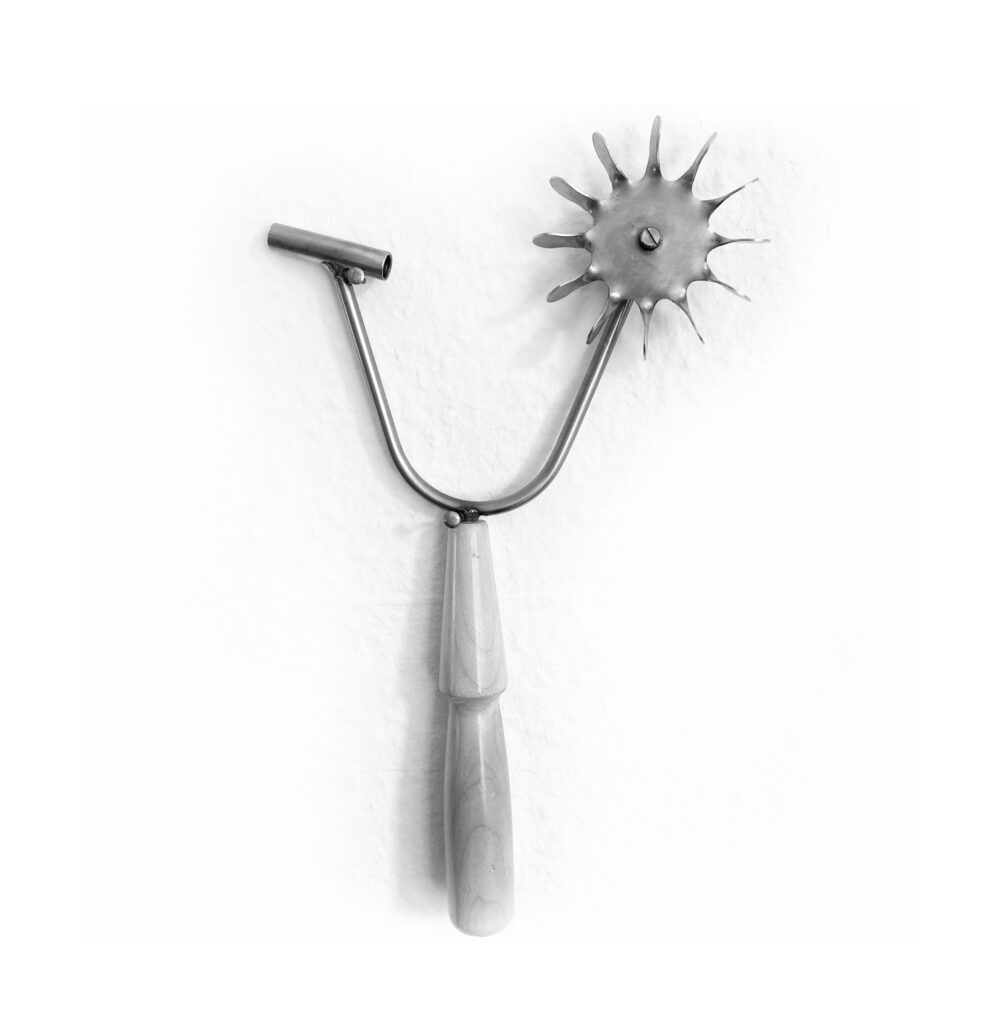
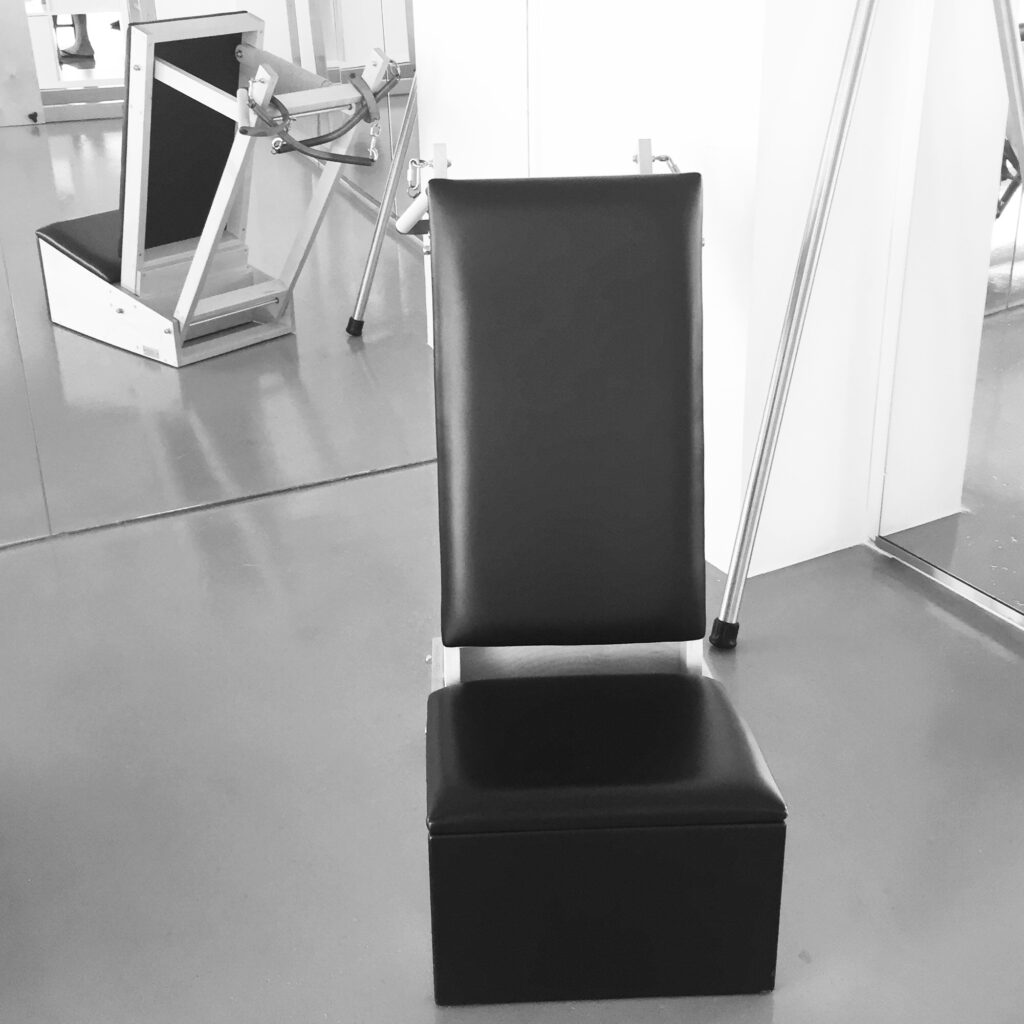

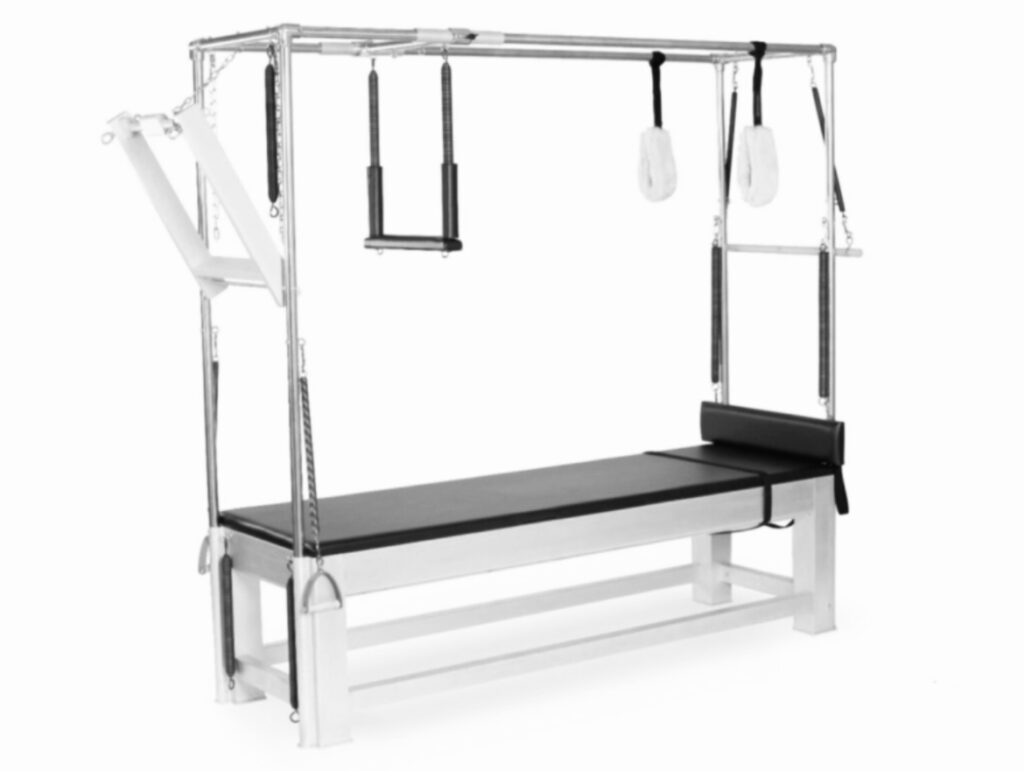
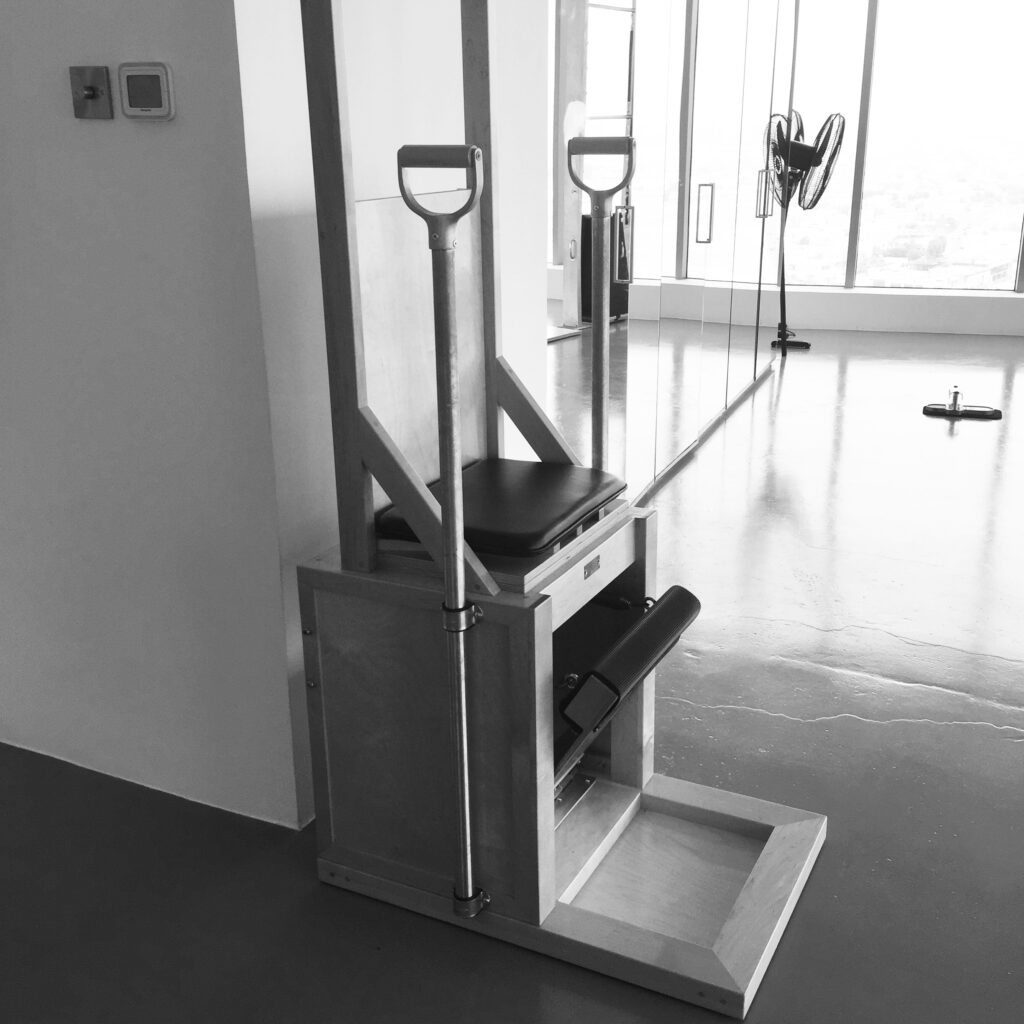
* Eve Gentry (a ballet dancer who had been training regularly in the Pilates studio since 1942) had to undergo an operation in 1955 after a routine examination that found a lump in her chest. When she woke up from the anesthesia, not only had one breast been completely removed, but also the large pectoral muscle that is responsible for a large part of the arm movements – Eve Gentry could hardly lift her arm. A disaster for a dancer. Her first port of call was Pilates and he accepted the challenge. In this case, however, he could not strengthen, stretch or get a muscle back into motion. The pec major was gone and ways had to be found to replace it. From the hundreds of exercises he had invented for his equipment, Pilates looked for the right ones for Eve Gentry and developed new sequences of movements. He put together exercises that were aimed at strengthening the muscles around the injury so that they could take over the tasks of the missing pectoralis major: the body should find alternatives to eventually be able to perform all the movements again. She regularly trained in the studio with the various pieces of equipment and Pilates gave her a “Ped-a-Pull” for training at home. After a year of hard work, she did it: she could move normally again. Some doctors, who also trained in the studio, were impressed with this rehabilitation and recommended making a film to capture this successful work and present it to others. Eve’s husband Bruce Gentry, a photographer, filmed in 16mm and black and white for 18 minutes how his wife, under the guidance of Joseph Pilates, does exercises on various Pilates devices.
** A hospital looking for new methods of rehabilitation for breast cancer patients was interested. But after the film was shown, the authenticity of the pictures was questioned and it was considered a fake. Bruce Gentry made the same film a second time. This time he filmed Eve with a bare torso and the clearly visible scar, leaving no doubt as to its authenticity. After showing this second film in the same hospital, the doctors were deeply impressed and asked Pilates, to develop a general rehabilitation program for patients after breast surgery. When the contract was drawn up, it was noticed that Pilates had neither a title, nor medical degree, or even a training as a physiotherapist, and so the contract offer was withdrawn.
The film rolls are now in the dance department of the New York Public Library at the Lincoln Center for Performing Arts
*/ ** from: Eva Rincke “Joseph Pilates. The man whose name became the program “
Herder Verlag 2nd edition 2016 pages 192-197
July 2021
Summer Pilates with JOY
Summer is finally here! And everyone who stays at home, but also everyone who goes on vacation and has internet access there, can pilat with Joy of Movement through July and August.
You have the choice between online mat training and offline mat and equipment training.
The online courses are not quite as numerous as in the previous months. But there are at least two courses a week and three in most weeks.
Since end of June I am offering offline Pilates as well. You can choose between single and duo lessons on the original Gratz® Pilates equipment in Hamburg-Wellingsbüttel.
Your very first lesson with Joy of Movement in the online courses is a free of charge trial lesson. The only requirement is that you have at least some Pilates experience.
If you are new to Pilates training, I recommend at least one individual or private lesson (online or offline) to get to know the basics (breathing, body awareness, concentration). This knowledge then enables you to take part in the current courses without any problems. And of course, in this case too, your first online mat pilates class is a free trial class.
The subscription system remains in place in Summer Pilates. On one hand this means that you are paying in advance, but on the other hand it guarantees you, that the classes you booked will definitely take place, regardless of the current number of participants on the day in question. Within the subscription period (in this case July and August) you can make up for lessons in all courses taking place and book additional lessons at a reduced price at any time.
You can find all prices here.
Please contact me for more information. I am happy to give you more details.
Let’s pilate together through the SUMMER with JOY!

June 2021
Pilates in real life
May is still not really May-like, but there is finally hope for improvement.
And even if the weather is only very slowly becoming more spring-like, the falling incidences and the latest resolutions of the Hamburg Senate promise that we can hope for a lasting easing of the corona measures.
In practice this means that the promised easing or the return to an “old” reality – I would rather speak of a “new” reality – will be possible from June onwards.
For Joy of Movement this means being able to offer single and duo lessons in my (admittedly small) home studio in Hamburg-Wellingsbüttel on original Gratz Pilates equipment.
Therefore, I would like to remind you of the current SPRING offer (see also my last newsletter), which can only be purchased until the end of May:
SPRING EXTRA 1 single hour € 50 instead of € 60
SPRING-EXTRA 2 duet hour € 25 instead of € 30 per person
All lessons can only be purchased until the end of May – the normal price will apply again from June.
The hours acquired are valid for three months from the first pilated lesson – so you don’t have to start pilating on the bones right away, but whenever it suits you.
If appointments cannot be kept due to illness or because I have to cancel, this three-month period will of course be extended.
I look forward to pilating with you into the springtime … and experiencing the Joy of Movement on the mat and at the Pilates apparati, online and offline.
May 2021
Spring with JOY
It’s already May and we are in the middle of spring – but the current temperatures tell us something else. At the moment nothing really wakes our spring fever … and the pandemic situation is not exactly mood-lifting either.
That’s why here is now a small spring offer from Joy ・ of ・ Movement to cheer you up:
You can book the following offers until the end of May:
- SPRING 1 1x Pilates training in a current class 17€ instead of 20€
- SPRING 2 2x Pilates training in a current class 33€
- SPRING 3 3x Pilates training in a current class 48€
- SPRING 4 4x Pilates training in a current class 62€
SPRING 1-4 remain valid in all classes in the current program until the end of June (knowledge of Pilates is required!).
If you are not sure whether your Pilates knowledge or your fitness level is sufficient for the current classes, you might want to try private or duet lessons instead as they come with a special spring price too:
- SPRING EXTRA 1 1 private 50€ instead of 60€
- SPRING-EXTRA 2 1 duet 25€ instead of 30€ per person
Or you might want to treat yourself to the complete PILATES BEGINNER PACKAGE:
SUPER-SPRING 2 privates + 2x class training 120€ instead of 150€
Private and duet lessons can be taken both online and offline on the Pilates machines – provided that offline training is possible again
You can buy all offers until the end of May.
SPRING 1-4 are valid until the end of June.
SPRING-EXTRA 1 + 2 and SUPER-SPRING remain valid for the whole summer due to the given circumstances
I look forward to moving with you into spring … and experiencing the Joy of Movement on the mat, at the Pilates apparati, online and offline.
